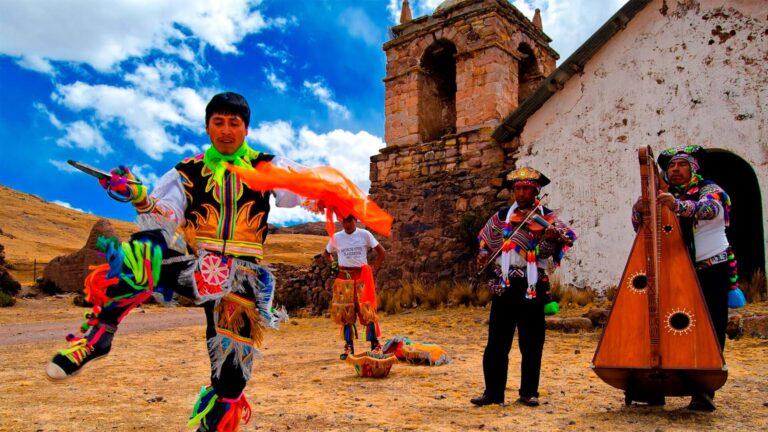Introduction: The Geography and Culture of Peru
Peru is a country with a rich cultural heritage and diverse geography which has influenced its culinary traditions. It is bordered by the Pacific Ocean to the west, Ecuador, Colombia, and Brazil to the north, and Chile and Bolivia to the south and southeast. The country is known for its stunning landscapes, including the Andes mountain range, the Amazon rainforest, and the Pacific coast.
Peru’s geographical diversity has allowed its people to cultivate a variety of ingredients, including potatoes, corn, quinoa, beans, fruits, and fish. The country is also known for its cultural diversity, with multiple indigenous groups and immigrant populations contributing to its rich tapestry of traditions. These factors have all had a significant impact on the development of Peruvian cuisine.
Coastal Cuisine: Seafood, Ceviche, and Pisco
Peru’s Pacific coast is home to an abundance of seafood, which has played a significant role in the development of its cuisine. One of the country’s most famous dishes is ceviche, which consists of raw fish marinated in lime juice and served with onions, chili peppers, and corn. Chefs along the coast have also popularized dishes such as arroz con mariscos (rice with seafood) and chupe de camarones (prawn chowder).
Another highlight of Peruvian coastal cuisine is Pisco, a grape brandy that is produced in the south of the country. It is often used in cocktails such as the Pisco Sour, which is made with Pisco, lime juice, egg whites, and bitters. The combination of seafood, Pisco, and other coastal ingredients has made Peruvian coastal cuisine a unique and flavorful experience.
Andean Cuisine: Potatoes, Quinoa, and Alpaca
The Andes mountain range is home to a variety of agricultural products, including potatoes, quinoa, and alpaca meat. These ingredients are staples of Andean cuisine and have been used by indigenous people in their cooking for centuries. Potatoes are ubiquitous in Peruvian cuisine, with over 3,000 varieties grown in the country. They are used in dishes such as causa (potato cake), papa rellena (stuffed potatoes), and chairo (potato soup).
Quinoa is another important ingredient used in Andean cuisine, often used as a substitute for rice or pasta. It is used to make dishes such as quinoa soup and quinoa salad. Alpaca meat is a popular protein in Andean cuisine, with dishes such as lomo saltado (stir-fried alpaca meat) and pachamanca (meat and vegetable stew) being popular examples. These ingredients have helped to create a unique flavor profile for Andean cuisine.
Amazonian Cuisine: Exotic Fruits, Game Meat, and Fish
The Amazon rainforest is home to an incredible variety of fruits, game meats, and fish, which have been incorporated into Peruvian cuisine. The region is known for its exotic fruits, such as camu camu, acai, and aguaje, which are used in juices, desserts, and sauces. Game meats such as peccary, deer, and capybara are also popular in Amazonian cuisine, often served grilled or in stews.
Fish is another important ingredient in Amazonian cuisine, with species such as paiche and dorado being commonly used. One of the most unique dishes in Amazonian cuisine is juane, which consists of rice, chicken, and spices wrapped in bijao leaves and boiled. The combination of exotic fruits, game meats, and fish has created a wide range of flavors in Amazonian cuisine.
Fusion Cuisine: Japanese, Chinese, and African Influences
Peruvian cuisine has also been influenced by immigrants from countries such as Japan, China, and Africa. In the late 1800s, Japanese immigrants brought with them ingredients such as soy sauce and techniques such as tempura frying, which were incorporated into Peruvian cuisine. This fusion of Japanese and Peruvian cuisine is known as Nikkei cuisine and has become very popular internationally.
Chinese immigrants also had a significant impact on Peruvian cuisine, introducing ingredients such as ginger, sesame oil, and soy sauce. African slaves brought with them techniques such as the use of peanuts and spices such as cumin, which were incorporated into Peruvian cuisine. These influences have contributed to the development of a unique fusion cuisine in Peru.
Conclusion: The Rich Tapestry of Peruvian Cuisine
Peruvian cuisine is a reflection of the country’s diverse geography and cultural heritage. Coastal, Andean, and Amazonian cuisine all offer unique flavors and ingredients, while fusion cuisine has created a new genre of dishes that blend traditional Peruvian ingredients with those from other cultures. The combination of fresh ingredients, bold flavors, and cultural influences has made Peruvian cuisine one of the most exciting and diverse in the world.

